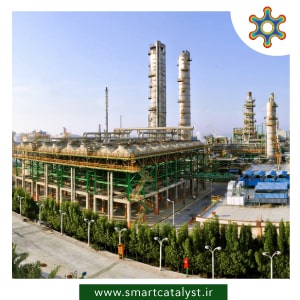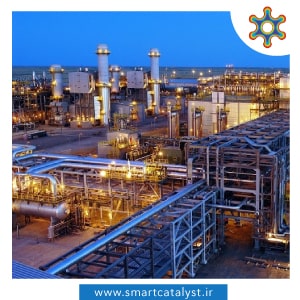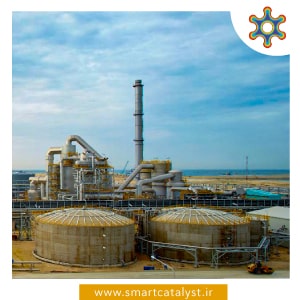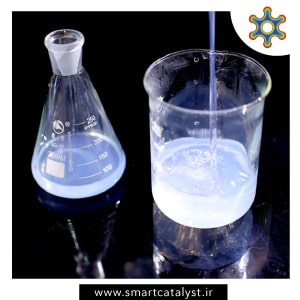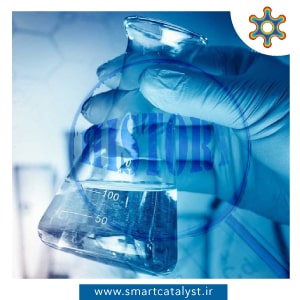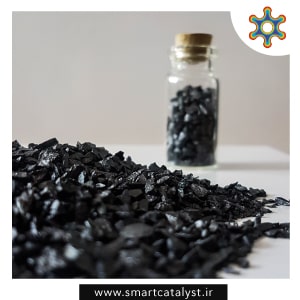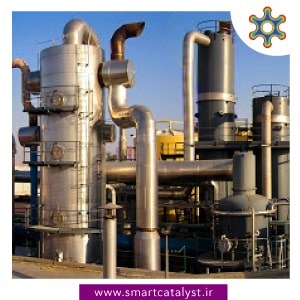Vanadium pentoxide catalyst is the main component for sulfuric acid production in chemical plants. In short, it called sulfuric acid catalyst. Vanadium pentoxide (V2O5) is used in the reaction of converting SO2 oxide to SO3. Normally, SO2 is converted to SO3 in the air and sulfuric acid will be produced, when reaction with air humidity proceed.
Vanadium pentoxide
Vanadium was first discovered by mineralogist in Mexico. Vanadium metal is one of the elements of Mendeleev table in the form of gray particles. It is one of the most abundant elements in the earth and is found in many mines. Countries like Australia, China, Russia and South Africa possess the major part of the resources of this element. Given its low density and resistance to high temperature and pressure, Vanadium is of a great importance in the aerospace industry.
-
The role of vanadium in sulfuric acid production plants
In reactors operating in sulfuric acid plants when SO2 passes through the material, the need for various catalysts would be met with vanadium. The production of sulfuric acid has two phase. The first phase, low level Vanadium catalysts will be used, but for convert gas to acid in the final step, super cesium catalyst should be used to convert the highest amount of SO2 to SO3, finally producing the highest amount of sulfuric acid.
Applications of vanadium in different industries
In industries
Sulfuric acid production
Reducing environmental pollution
Power plants
The steel manufacturing process
using as a catalyst in the chemical industry
Therapeutic use
Treating diabetes
Low blood sugar
High Cholesterol
Heart disease
Tuberculosis
Cancer prevention
Athletic performance improvement in Weightlifting exercises
Non-metallurgical use
Producing ceramics
electronic parts
dyeing leather and clothes
making bodywork and aircraft fuselage
producing steel armors
bullets of mortar
use in photography
Smart Catalyst: producer of vanadium pentoxide catalyst
Recently, due to the sanctions, domestic producers intend to provide a new generation of catalysts which are needed in the industrial and petrochemical sectors, such as sulfuric acid catalysts. In view of the fact that the need for this type of catalyst is estimated to be 1 ton/day, we guarantee that we are able to meet the needs with all the hard work, and the sleepless nights of our team in Smart Catalyst. Using domestic experts and European consultants and also adopting the most up-to-date equipment, devices and tools, the Smart Catalyst has been able to answer the need for the production of sulfuric acid catalysts. Currently the focus of our company is on producing various grades of this catalyst. You can follow our latest news on the Smart Catalyst page.
So as to order sulfuric acid catalyst, visit the relevant page.
FAQ
In chemistry, catalyst is a component that speeds up the reaction without being consumed. Enzymes are naturally occurring catalysts that are responsible for many biochemical reactions.
The catalyst which is used during the production process is vanadium pentoxide. In production, excess oxygen is added to sulfur dioxide at a temperature of 450 °C in the presence of a vanadium catalyst. The formed sulfur trioxide is added to sulfuric acid, which forms oleum (disulfuric acid), and subsequently oleum is added to water to form sulfuric acid. This sulfuric acid is well concentrated. The contact process is a method for producing concentrated sulfuric acid required for industrial use. Adopting sulfuric acid catalyst keeps the low temperature in the reactor and besides, cause the reaction pace to be high. The catalysts are able to alter the oxidation state. Vanadium oxide is re-oxidized by oxygen.
The chemical formula of vanadium pentoxide is V2O5 and it is in the form of yellow to red crystalline powder. It is more concentrated than water and it is also adopted a catalyst in diverse industrial processes. It functions in the contact process for oxidation of SO2 to SO3 with oxygen at 440 ° C. Moreover, it is used in the oxidation of ethanol and in the production of polyamides and other products.
At normal concentrations, vanadium is non-toxic. However, exposing to high loads of vanadium oxides in the breathing air of vanadium processing companies is dangerous. Vanadium can enter the body through the lungs or normally through the stomach.
Asbestos is more expensive in addition to being poisoned by impurities such as Arsenic (III). Although Vanadium pentoxide is less effective, it is cheaper and it is also not affected by impurities. Hence, vanadium pentoxide is preferred over platinum asbestos.



